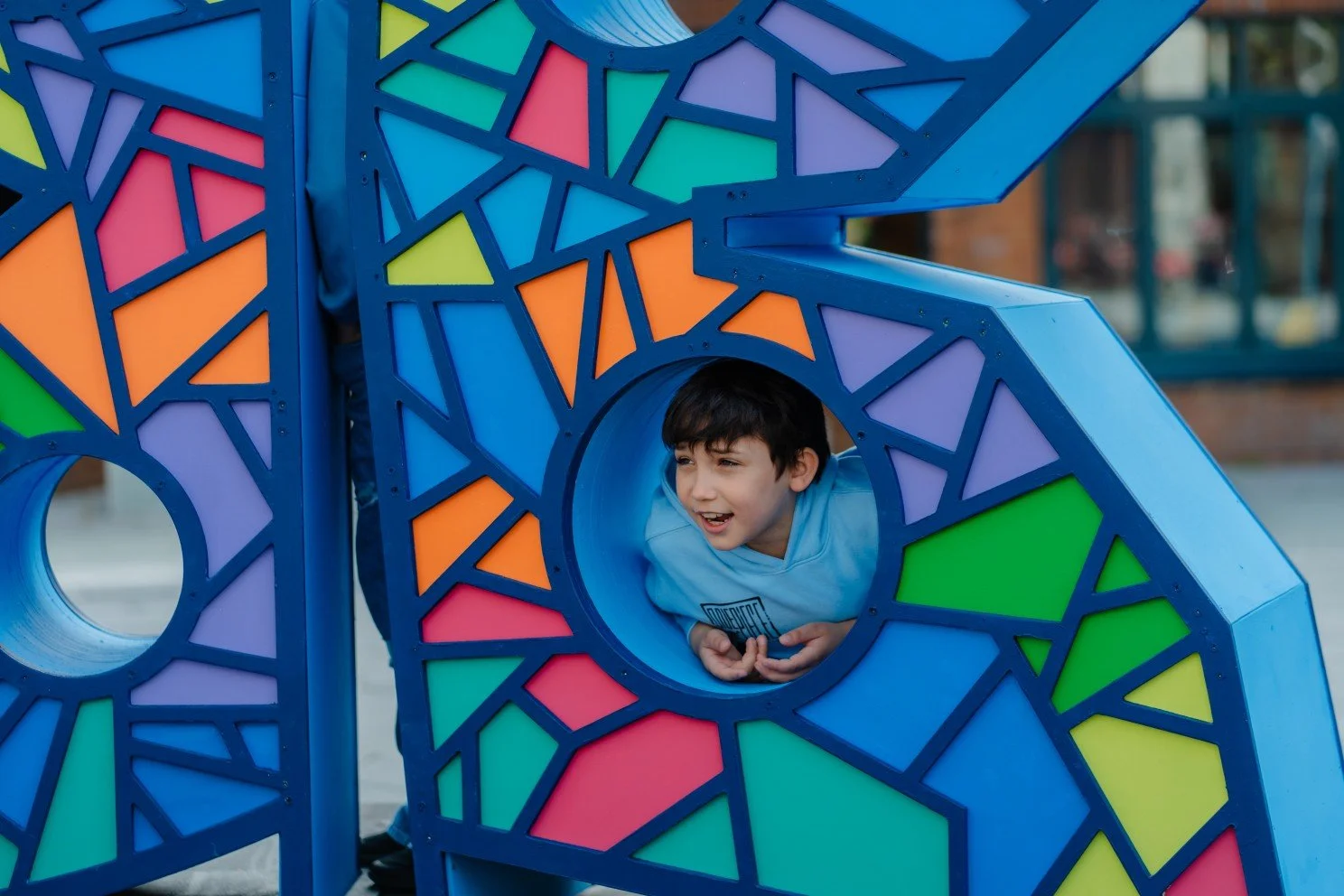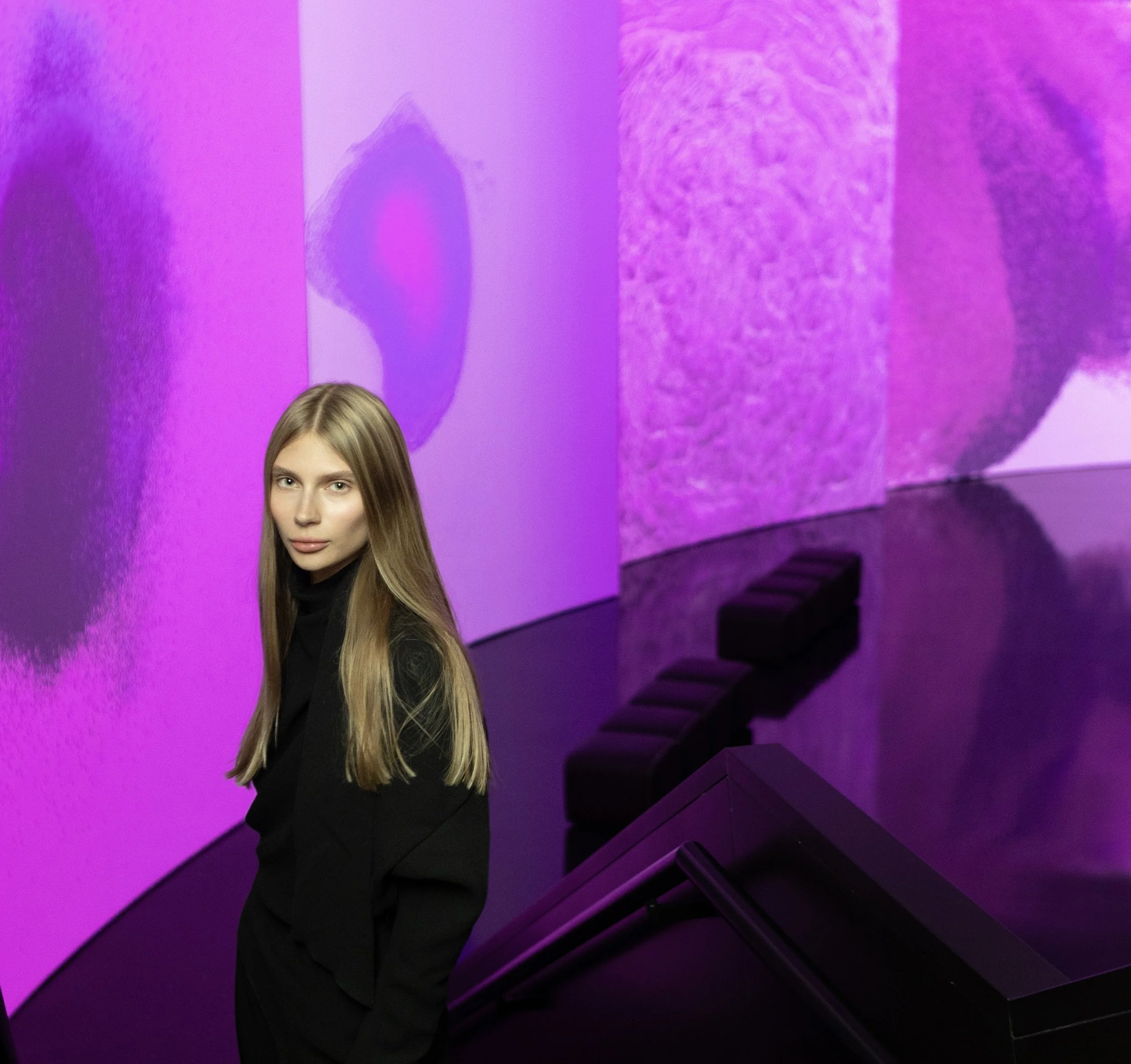10 Questions with Aylal Heydarova
Aylal Heydarova (b. 1990, Baku, Azerbaijan) is an emerging Azerbaijani painter whose works span a variety of artistic styles and creative techniques, including pointillism, modernism, and abstract.
Strongly influenced by her family roots and the vibrant culture of Azerbaijan, Aylal began painting from a very young age in her father's workshop and has since led an invigorating career creating world-class artwork and showcasing them in international galleries, exhibitions, biennales, and art competitions.
With her distinct individualistic approach, Aylal's paintings are highly appreciated by her viewers, who are usually overwhelmed by the brightness and combination of color, clear composition, and beautiful artificiality. Looking at her work, we are often met with a gentle breeze, where an optical effect comes to fruition, and we see an exact depiction of reality appear before our eyes.
Her creativity lies in parallel with a global vision of the cosmos, combining elements of nature, the culture of her homeland, and the universal values of human beings – all these deep concepts flow through together to deliver an abstract conceptualization of reality that aims to connect people through the colors, techniques, and emotions she portrays in her artwork.
It is rare that we see such boldness and purity in one's art. The beauty in her creativity lies within the fact that her art is not bound by any rules – it's irreplaceable. It was created by a unique and unrepeatable soul who strives to reinvent the way art is created so that the boundaries of established laws are trailed and given a new meaning and perspective.
Aylal Heydarova - Portrait
ARTIST STATEMENT
Born and raised in Azerbaijan and strongly influenced by cultural roots, Aylal Heydarova has a global vision of the world guided by the cosmos of her sensitivity towards nature, culture, and human values.
In her art, she delivers an abstract conceptualization of reality that aims to connect people through the colors, techniques, and emotions she delivers in her artwork.
Aylal Heydarova constantly strives to reinvent the way she creates artwork so that the boundaries of established laws are tried and given a new meaning and perspective.
#SAVINGBUTTERFLIES, London, 2024 © Aylal Heydarova
#SAVINGBUTTERFLIES | Project Statement
Launched in April 2024, the #SAVINGBUTTERFLIES project celebrates transformation and resilience, reflecting the journeys of both butterflies and migrants. Our first project, a wooden butterfly created by children at WELR in Chelsea, showcased how climate change affects butterfly migration. After being displayed for three months in the Piazza, our big blue butterfly took flight to its new home in the scenic Union Park, Wembley.
In April 2025, asylum-seeking children in Wembley will work on a new butterfly sculpture representing Brent's diverse communities and culture.
Butterflies, with their delicate presence, not only enhance the beauty of our landscapes but are also crucial for pollination, supporting a fragile ecosystem. Today, they face unprecedented challenges due to climate change, with over three-quarters of UK butterfly species in decline. At WE RESTART, we combine creativity with conservation to tackle this issue. We teach young people about the environment and encourage them to help. Our project connects the struggles of butterflies with those of displaced people, showing how both need a safe place to thrive.
This inspiring initiative weaves together the artistry of London-based artist Aylal Heydarova with the enthusiasm of our younger generation to address one of the most pressing issues of our times — climate change.
At the heart of #savingbutterflies lies an educational on butterfly conservation and climate change, an interactive workshop designed specifically for children aged 8 to 15, led by CAUKIN Studio. This hands-on experience offers a unique opportunity for our youth to learn, create, and contribute to a greener future.
Amplifying the #savingbutterflies message, our vibrant social media campaign invites the wider community to engage with the project. Through captivating imagery, educational content, and interactive challenges, we encourage everyone to raise awareness and spark conversations about the significance of butterflies and the broader implications of climate change.
#SAVINGBUTTERFLIES, London, 2024 © Aylal Heydarova
INTERVIEW
Welcome back to Al-Tiba9. What have you been up to since our last chat?
Thank you for having me back! It has been an exciting and transformative period. Since our last conversation, I've focused on expanding my artistic journey into community-driven projects. One of the most rewarding initiatives has been the Saving Butterflies Project, which merges art and environmental activism. This initiative has allowed me to connect with young people, including asylum-seeking children, to create public sculptures that raise awareness about climate change and conservation.
Through workshops and installations in places like the World's End Place and Wembley Park, we've explored how creativity can address pressing global issues. Seeing the enthusiasm of the participants and their ability to channel complex themes into art has been incredibly inspiring. Beyond this, I've continued to develop my paintings and prepare for upcoming exhibitions. These experiences have reaffirmed my belief in the power of art as a tool for connection and transformation.
You recently launched a new interesting project, #SAVINGBUTTERFLIES. Could you share the inspiration behind the project and how it aligns with your artistic vision?
The #SAVINGBUTTERFLIES project was born out of my deep admiration for nature and its delicate balance, as well asmy commitment to building a sense of connection between people and the environment. Butterflies, in particular, symbolize transformation, resilience, and fragility—qualities that resonate deeply with both the natural world and the human experience, especially the journeys of migrants and displaced individuals.
This initiative reflects my artistic vision of connecting people through creativity and the shared universal values embedded in my work. By combining artistic expression with environmental education, #SAVINGBUTTERFLIES encourages young people to engage with critical issues like climate change and biodiversity conservation through hands-on workshops. For me, it's an extension of the abstract conceptualization I aim to achieve in my paintings—where art not only conveys emotions but also serves as a catalyst for awareness and action.
#SAVINGBUTTERFLIES, London, 2024 © Aylal Heydarova
#SAVINGBUTTERFLIES, London, 2024 © Aylal Heydarova
What motivated you to connect butterflies' delicate nature with the displaced people's struggles in this initiative?
Butterflies have always fascinated me with their transformation and fragility. They thrive in specific conditions but face immense challenges due to environmental changes—much like displaced people who are uprooted from their homes. This connection inspired me to create a project that not only raises awareness about biodiversity and conservation but alsohighlights the resilience of those who are displaced. It's about fostering empathy and drawing parallels between the need for safe spaces—for butterflies and for people—so that both can flourish despite adversity.
Can you describe the collaborative process of creating butterfly sculptures with children? What have you learned from their involvement?
The process of working with children is as rewarding as it is inspiring. Each workshop is an opportunity for them to unleash their creativity while learning about critical environmental issues. We provide guidance and materials, but the children truly take ownership of the sculptures by contributing their ideas and artistic touches. Their enthusiasm and curiosity have taught me how much potential young minds hold for driving change. They approach problems with optimism and imagination, reminding me of the importance of engaging the next generation in shaping a better future.
#SAVINGBUTTERFLIES, London, 2024 © Aylal Heydarova
How do your other artistic practices, such as pointillism and modernism, influence the conceptual design of these sculptures?
My work in pointillism, with its patterns and attention to detail, directly influences the visual elements of the butterfly sculptures. Modernism, on the other hand, allows me to experiment with form and abstraction, blending traditional techniques with innovative ideas. The sculptures are a convergence of these influences—each detail represents a unique story or perspective, while the overall piece embodies a shared, cohesive vision. This mirrors my broader artistic philosophy: finding unity in diversity, whether in nature, culture, or art.
In what ways do you see art playing a role in addressing critical issues like climate change and social displacement?
Art has the unique power to communicate complex ideas in ways that resonate emotionally with people. It can bridge gaps, spark conversations, and inspire action. With projects like #SAVINGBUTTERFLIES, art serves as a platform to address pressing issues such as climate change and social displacement. By involving communities in the creative process, we not only raise awareness but also empower individuals to feel they can make a difference. Art is both a mirror and a catalyst—it reflects our challenges and motivates us to envision solutions.
#SAVINGBUTTERFLIES, London, 2024 © Aylal Heydarova
#SAVINGBUTTERFLIES, London, 2024 © Aylal Heydarova
What challenges did you face in bringing the first butterfly sculpture to life, and how did you overcome them?
One of the biggest challenges was managing the logistics of coordinating workshops, securing funding, and bringing different stakeholders together. It was also important to ensure that the project remained inclusive and accessible to all participants, particularly asylum-seeking children. Overcoming these challenges required collaboration and persistence. Local councils, sponsors, and community members offered their support, both financially and logistically, which made the project possible. These experiences reaffirmed my belief in the strength of collective effort when working toward a shared vision.
With the project expanding across London, how do you envision its impact on diverse communities and environmental awareness?
As the project reaches more boroughs, I envision it becoming a symbol of unity and collaboration. The sculpture represents the unique voices and cultures of the communities involved. By engaging children from diverse backgrounds, the project creates inclusivity while promoting environmental awareness. I hope it inspires people to see the connections between their own lives and the broader issues of conservation and social cohesion. The impact of the sculpture could create a city-wide dialogue about sustainability and shared responsibility.
#SAVINGBUTTERFLIES, London, 2024 © Aylal Heydarova
What message would you like to convey to supporters, donors, and volunteers through this project, and how can they contribute to its success?
The core message of this project is that small acts of creativity and compassion can lead to meaningful change. To supporters, donors, and volunteers, I want to emphasize that their involvement—whether through financial contributions, volunteering at workshops, or simply spreading the word—makes a significant difference. This project thrives on collective action, and every effort helps us bring art and awareness to more communities. Together, we can create something beautiful that resonates far beyond the scope of a single sculpture.
Apart from London, where would you like to present the project in the future? Do you already have anything planned?
I would love to see #SAVINGBUTTERFLIES expand beyond London to other cities across the UK and internationally. There's so much potential to adapt the project to different cultural and environmental contexts, allowing each community to contribute its own unique perspective. While nothing is finalized yet, I am exploring opportunities for future collaborations and partnerships in areas where art can address pressing social and ecological issues. My hope is for the project to evolve into a global initiative, uniting communities through creativity and shared environmental responsibility.

























